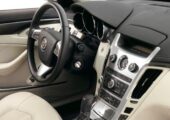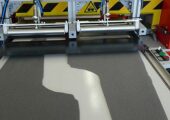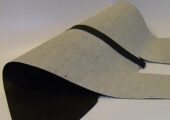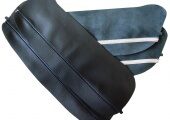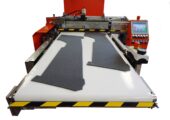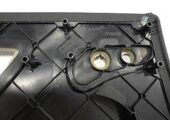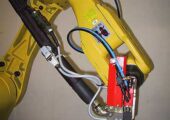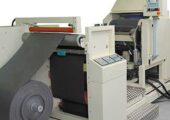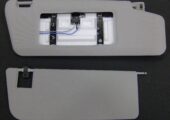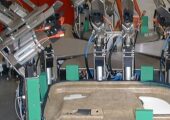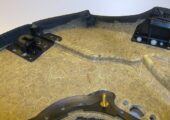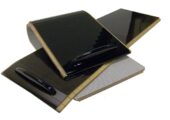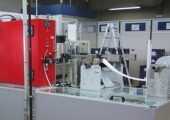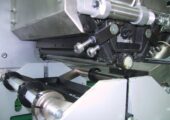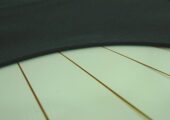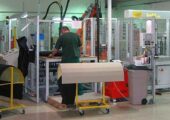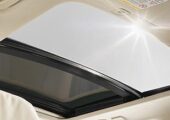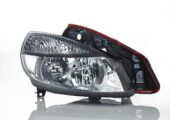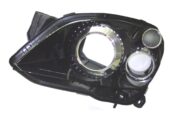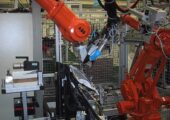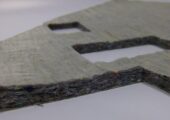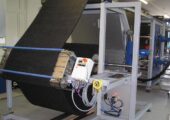Industries
/
AUTOMOTIVE
Especially in the car interior, a lot is being glued with hotmelt. But hotmelt is also frequently used in bodywork construction (e.g. bumper linings), sound insulation, convertible rear window assembly or for bonding and sealing of headlights. Hotmelt is also increasingly being used in electronics, cable production and sensor technology.
- Automotive Interior
- Rear window assembly
- Car body sealing / Sun roof modules
- Headlight Assembly
- Insulation
- Batteries
Especially in the car interior, a lot is being glued with hotmelt. But hotmelt is also frequently used in bodywork construction (e.g. bumper linings), sound insulation, convertible rear window assembly or for bonding and sealing of headlights. Hotmelt is also increasingly being used in electronics, cable production and sensor technology.
Roof linings, cockpit or instrument panel, dashboard, centre console, seats and headrests, door panels as well as door mirrors or parapets, armrests, A- / B- / C-pillars, trunk equipment are finished with fabrics, foils, leather or other materials. The adhesive is applied to a wide variety of materials with balti hotmelt systems in dot or caterpillar form, usually by means of automatic robot application, or flat by spraying, slot nozzle or roller technology prior to laminating, laminating, folding, joining or pressing.
Coating of fabric/foil - from roll to roll
Often, endless fabric, foil, foam foil etc. from a roll is coated in advance on a coating stand with reactive adhesive in order to be vacuum or press laminated later on separate lines. A direct linking of the lines is sometimes useful to obtain compact, self-contained systems.
Bead application for glueing of retainer / ledge
Depending on the number of pieces, bead and spray application is applied manually or by robot on retainers or intended gluing points on the carrier (e.g. environmentally friendly fibre composite carrier parts) and then joined together in the same way. balti has already supplied complete systems in this area, e.g. with rotary indexing table or partially monitored manual application. The latter e.g. with PUR system, multiple workstation, automatic switch-off of unused application stations, time help/alarms for operators glue application, joining time etc.
Lamination of roller blinds / Glueing labels
Compartments and storage locations as well as their covers / lids can be glued with hotmelt. Whether only a handle, label is mounted on a knob or ashtray with hotmelt adhesive or slats are held together with a fabric connection and laminated with the hinge function to form so-called roller blinds, balti can also offer complete concepts here.
Convertible tops are not only sewn together, but also glued at different places with hotmelt fabric and glass. balti not only supplies melting plants but also complete assembly cells for the application of glue and subsequent joining and pressing.
Rear window assembly of convertible folding top
Robot system for several vehicle types. Application of hotmelt on the rear window for folding fabric to fabric and for component assembly on the inside. In some cases 2K adhesives are also used for the latter. Balti is also happy to integrate such systems, mostly from third party companies.
Butyl or special high-viscosity PUR adhesives are often used to seal car bodies or roof modules. The balti product segment covers such applications perfectly.
Relatively large quantities of highly viscous and reactive PUR adhesives, with the dual function of bonding and sealing, are applied precisely into the grooves provided and then joined together to form the complete headlamp.
Mats and moulded parts made of fleece, foam, cotton or other natural fibres, are laminated and assembled with hotmelt. In many cases, non-reactivatable hotmelt, so-called pressure-sensitive adhesives or PSA (pressure-sensitive adhesive) are also only used as assembly aids.
Also in the fast growing environment of battery production for e-mobility balti systems are used for bonding within the batteries as well as for sealing of housings.


